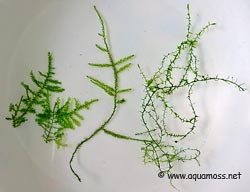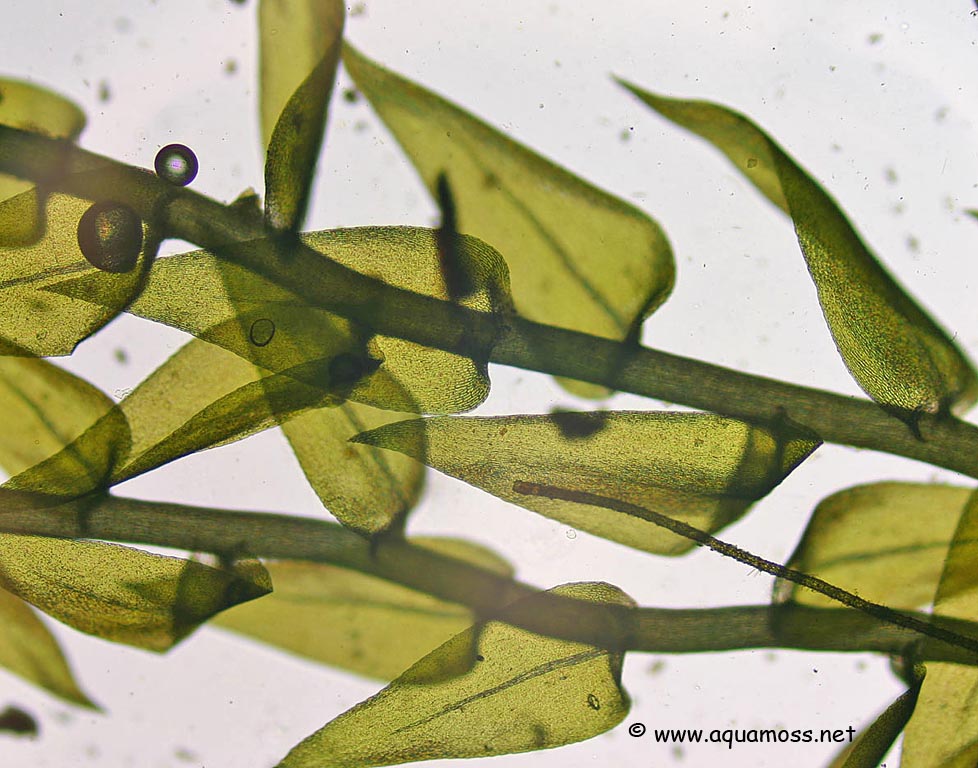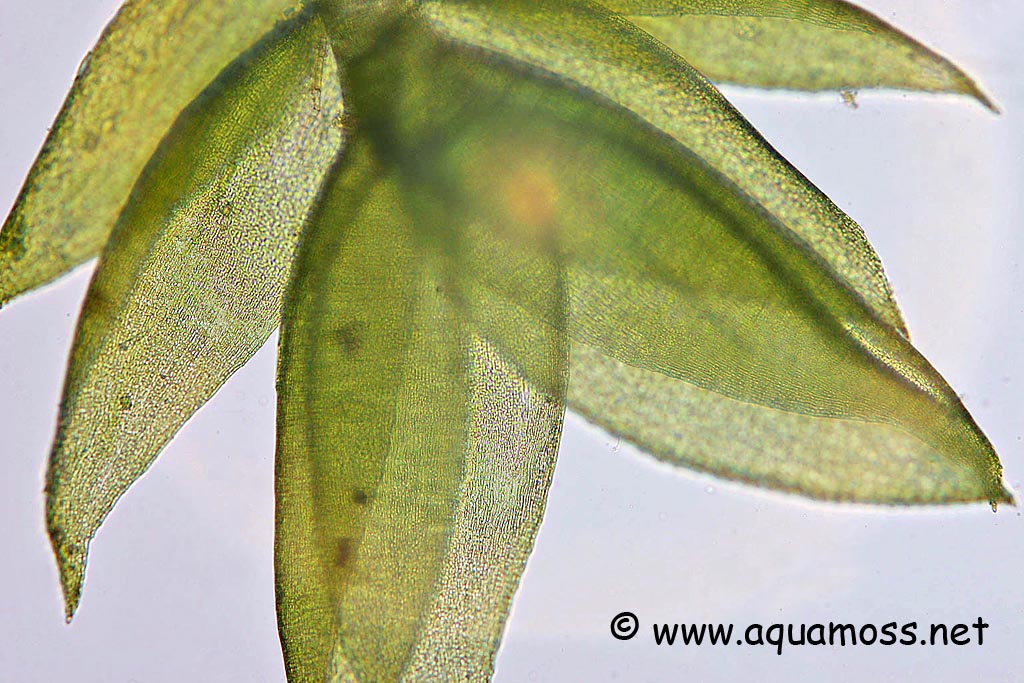Ho sempre identificato il muschio del mio acquario come Taxiphyllum barbieri (Java Moss) in quanto come tale mi era stato venduto.
Osservando le foto di vari acquari ho però notato che la crescita del Taxiphyllum barbieri is more horizontal than that of my moss as soon as possible, it tends to grow upwards. Consult the site
Aquamoss that, in my opinion, is the most complete on the subject, I have tried to identify in detail by analyzing the moss from its structure.
 The lack of branching and leaves me to prevent a relatively small membership of the genera and Vesicularia Fissidens but seems to confirm the membership of the kind Taxiphyllum. But I have noticed the similarity with the typical growth of Leptodictyum riparium (stringy Moss) ... the following photo taken from the site Aquamoss compare, order,
The lack of branching and leaves me to prevent a relatively small membership of the genera and Vesicularia Fissidens but seems to confirm the membership of the kind Taxiphyllum. But I have noticed the similarity with the typical growth of Leptodictyum riparium (stringy Moss) ... the following photo taken from the site Aquamoss compare, order, Vesicularia dubyana, barbers and Taxiphyllum Leptodictyum riparium.
 The photo does not fully resolve the doubt in that, only by comparing the structure of the moss in my possession which could be either Java stringy moss.
The photo does not fully resolve the doubt in that, only by comparing the structure of the moss in my possession which could be either Java stringy moss. I then tried to compare the "leaves" of moss in my possession with those of the two mosses above (Java and stringy).
maximize the pictures of my moss you see the "leaves" approximately lanceolate (subsequent microscopic observation confirms this observation by showing greatly elongated leaves:

that resemble those of Leptodictyum riparium:

and much less to those of the barbers who Taxiphyllum sonopiù court and "rounded"
 So both the structure and the type of growth would seem to confirm that what is in my possession Leptodictyum riparium. This does not significantly alter the method of cultivation as it is a moss that supports environmental characteristics similar to Taxiphyllum barbers, instead change the rules for use in the aquarium as much vertical development, which I actually found, makes it more suitable for a background compared to the cultivation on wood or a focal point in the foreground.
So both the structure and the type of growth would seem to confirm that what is in my possession Leptodictyum riparium. This does not significantly alter the method of cultivation as it is a moss that supports environmental characteristics similar to Taxiphyllum barbers, instead change the rules for use in the aquarium as much vertical development, which I actually found, makes it more suitable for a background compared to the cultivation on wood or a focal point in the foreground.
0 comments:
Post a Comment